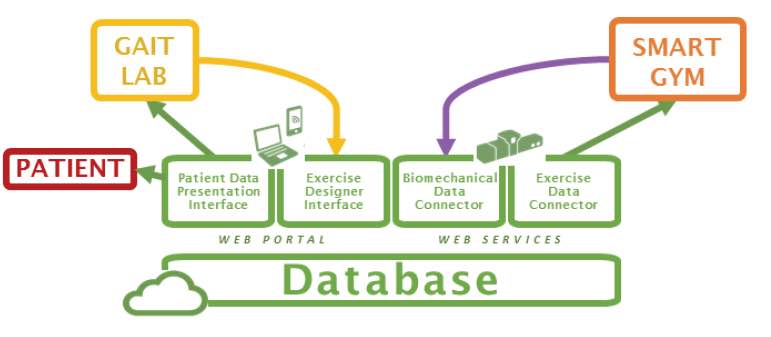In recent years there has been a significant increase in the development of walking aid systems and in particular of robotic exoskeletons for the lower limbs, used to make up for the loss of walking ability following injuries to the spine (Fig. 1).
However, in the initial training phase the patient is still forced to use the exoskeleton in specialized laboratories for assisted walking, usually equipped with vision systems, accelerometers, force platforms and other measurement systems to monitor the patient training (Fig. 2).


To overcome the limitations given by both the measuring environment and the instruments themselves needed, the University of Brescia joined forces with other research laboratories and created a pair of instrumented wireless crutches able to assess the loads on the upper limbs through a suitable biomechanical model that measures the load exchanged between the soil and the crutch.
In addition to providing a great help to the physiotherapist for the assessment of the quality of walking and reduce the risk of injury to the upper limbs due to the use of the exoskeleton, the real advantage of the developed device lies in the fact that it is totally wireless, allowing its use in external environments where the user can feel more comfortable. It is in fact known in the literature that the behavior of a subject during a walk varies depending on the environment in which it is performed, both because of the space limitations and of the range of the measurment instrumentation, which limits the trajectory the patient performs in a laboratory compared to the one performed outdoors without strict limitations.
It is also important to relate and evaluate the measured quantities by averaging them on a percentage basis associated with the phases of the step instead of time, in order to compare them with the physiological behavior of the subject, usually related to the phases of the step (swing and stance, Fig. 3).

STEP 1: Instrumented wireless crutches design


STEP 2: Supervised Machine Learning algorithm for gait phases prediction


STEP 3: Experiments
The proposed system has been tested on 3 healthy subjects. Each subject has been tested on a walk indoor and on a walk outdoor, different for every subject.
For each subject we trained a model specific for the person. This choice was driven by the fact that every person walks in its way, so it is best to comprehend its specific style and use it to monitor its performances while walking.
To learn more about the project and to view the results, feel free to download the presentation below!





